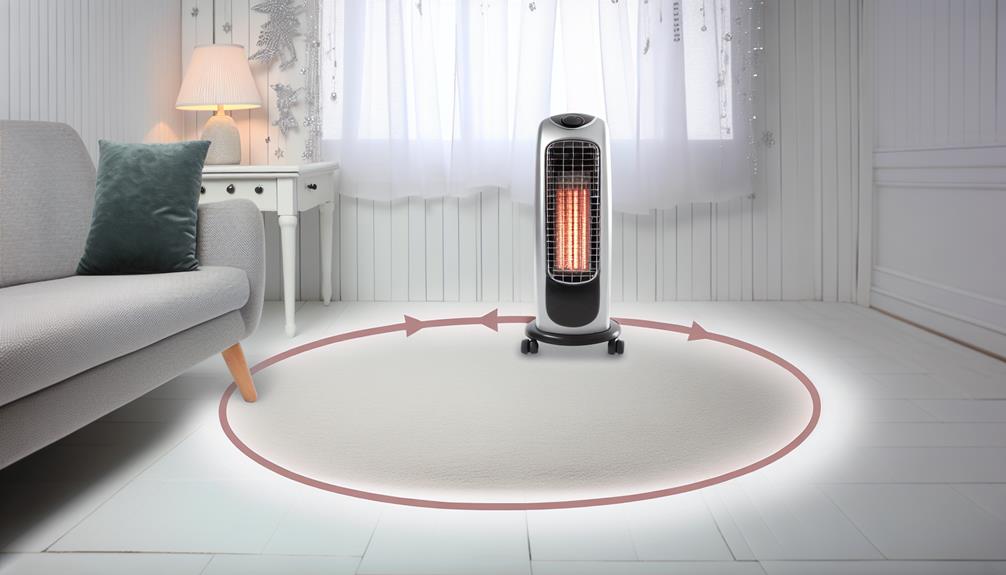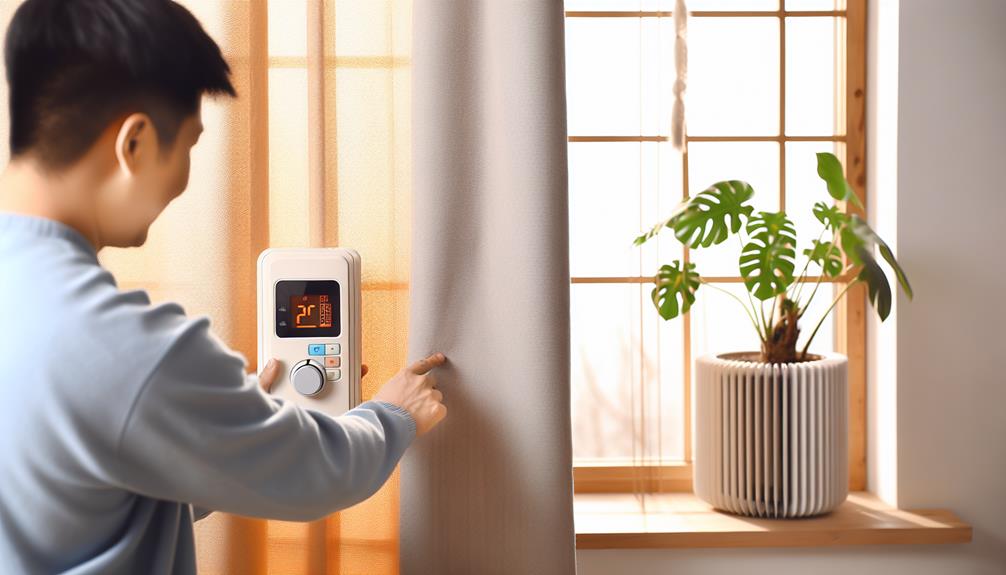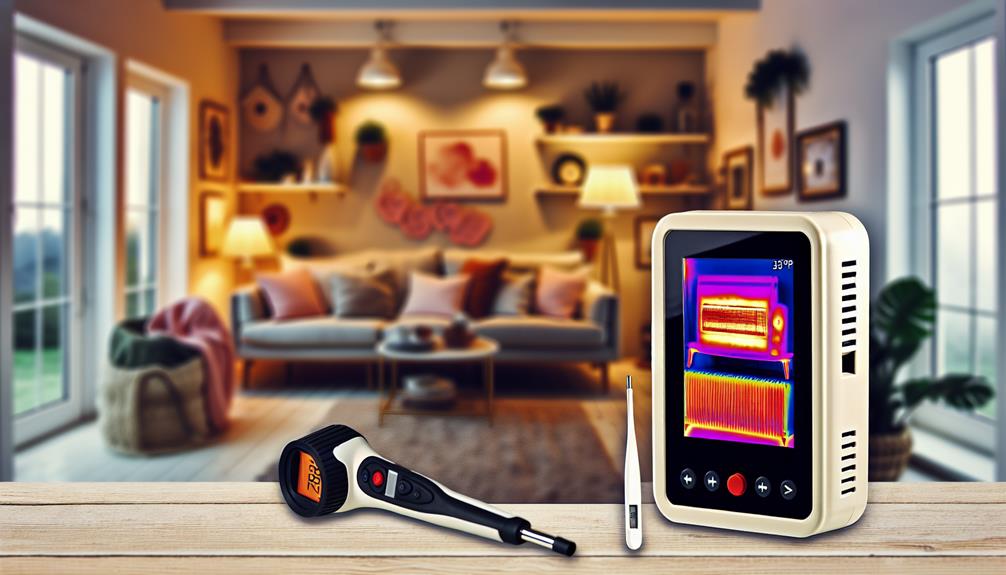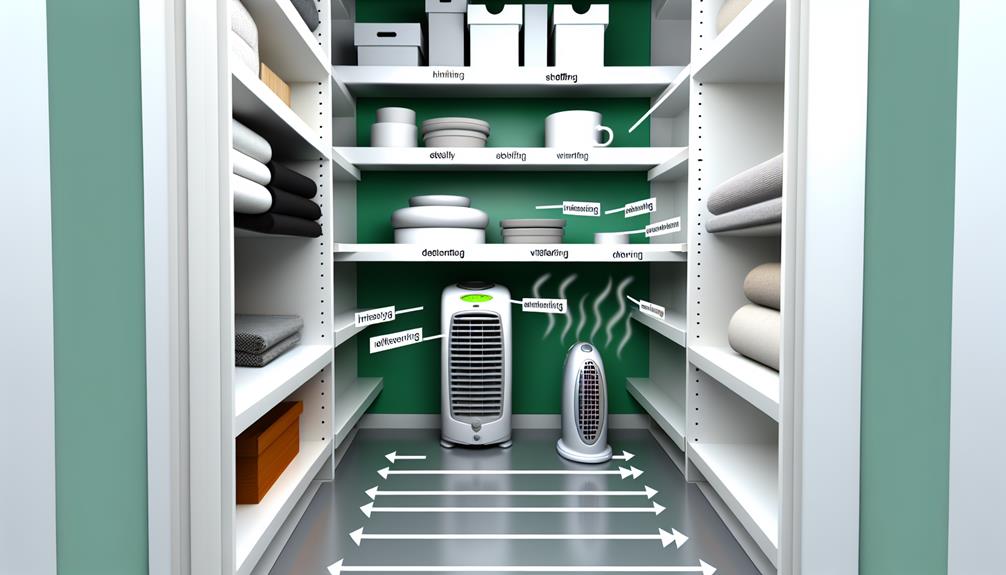While you might worry about the safety and practicality of using portable heaters, there are numerous ways to safely incorporate them into your daily routine. You've likely heard the horror stories of accidents and inefficiencies associated with these devices, but with the right knowledge, you can use them to your advantage. By selecting the proper heater for your space and understanding its optimal placement, you're already on the path to achieving comfort without compromising safety. You need to maintain safe distances from combustibles, master the controls for efficient use, and ensure the unit is cleaned and maintained regularly. The key lies in the small details that make a big difference—details that could not only extend the life of your heater but also significantly reduce your energy bills and prevent potential accidents. So, let's explore how you can turn these everyday appliances into reliable sources of warmth, while maintaining a safe and energy-efficient home.
Key Takeaways
- Assess the room size and choose a heater with the appropriate capacity.
- Consider the type of heater that best suits your heating needs.
- Ensure proper heater placement and adhere to safety guidelines.
- Familiarize yourself with heater controls and use energy-efficient practices.
Selecting the Right Heater
When choosing a portable heater, it's crucial to assess the room size to ensure the unit's heating capacity meets your space requirements effectively. You'll find various types of space heaters, such as convection, which warms the air; radiant, which directs heat to objects and people; and combination heaters that offer both methods. Your choice should align with your heating needs and preferences.
Before buying a space heater, check for a safety certification label from recognized independent testing organizations, like UL or ETL. This label indicates that the heater you buy has met rigorous safety standards. Consumer Reports and other review sites can also provide valuable insights into the safest space heaters on the market. These resources often highlight models with essential safety features, including tip-over switches that automatically shut off the heater if it falls over, and overheat protection that prevents potential fire hazards.
Moreover, consider the heater's energy efficiency and operational cost. An efficient unit can save you money in the long run while keeping your space cozy. Remember, the right heater not only warms your room but does so safely and economically.
Optimal Heater Placement
After selecting the right space heater based on safety and efficiency, it's equally important to place it correctly to maximize warmth and minimize risks. Position your heater on a flat, stable surface, steering clear of any rugs or soft ground that could lead to instability. Always ensure it's at least 3 feet away from flammable items such as curtains, furniture, and loose papers that can easily catch fire.
Carefully avoid wet or damp areas, like kitchens or bathrooms, to prevent electrical hazards. This also means keeping the space heater away from water sources to ensure safe operation. Opt for a model with robust safety features, including a tipover switch that automatically turns the heater off if it falls over, and an overheating sensor that shuts the unit off if it gets too hot. These features are critical for preventing accidents.
Never use an extension cord with a space heater, as they can overheat and potentially cause a fire. Instead, plug it directly into a wall outlet. Always follow the manufacturer's instructions for additional safety guidelines and placement tips. By securing the right spot and leveraging the heater's safety features, you'll maintain a comfortable and secure environment.
Maintaining Safe Distances

Ensuring a safe distance, always keep your portable heater at least three feet away from any flammable materials, such as curtains, bedding, or furniture, to prevent fire hazards. This space heater safety rule, often referred to as the "at least 3 feet away" guideline, is crucial to prevent the intense heat from the heating element from causing items to ignite nearby.
Adhering to this three-foot clearance not only reduces safety hazards but also ensures optimal air circulation for effective heating. Remember, the heater's surface can get extremely hot; maintaining distance prevents accidental burns to children and pets. Establish a kid- and pet-free zone around the heater to reinforce this precaution.
Avoid using extension cords with portable heaters, as they can overheat and potentially cause a fire. Instead, plug the heater directly into a wall outlet. Check the table below for a quick reference on maintaining safe distances:
| Safety Feature | Recommended Action |
|---|---|
| Flammable Material | Keep at least 3 feet away |
| Kid and Pet Safety Zone | Establish a 3-foot perimeter |
| Power Supply | Plug directly into wall outlet |
Understanding Heater Controls
To effectively manage your portable heater's performance and safety, it's essential to become well-versed with its various controls and settings. Understanding how to use the heater properly includes recognizing the functionality of different buttons and dials, as well as being aware of the safety mechanisms in place. Here are some critical aspects to consider:
- Temperature Control
- Adjust the thermostat to match your comfort level.
- Consider the room size when setting the temperature to ensure efficient heating.
- Timer Settings
- Use the timer to set specific hours for operation, helping to conserve energy.
- Program the heater to turn on before you arrive home for added convenience.
- Safety Features
- Look for a sensor that automatically shuts off the heating system in case of overheating.
- Ensure your heater has tip-over switches to prevent fire risks if it falls over.
- Protect against electric shock by using heaters with a ground-fault circuit interrupter (GFCI), especially in damp areas.
Energy-Efficient Usage Practices

To maximize your portable heater's efficiency, you must set your thermostat to the lowest comfortable temperature; each degree you lower can significantly reduce your heating bill. Regular maintenance, including cleaning filters and checking for wear and tear, ensures your unit operates at peak performance, preventing energy waste. By selecting a heater with advanced safety and efficiency features, you can further cut down on unnecessary power consumption.
Optimal Thermostat Settings
Adjusting your thermostat to 68°F during the day strikes a balance between comfort and energy efficiency, offering a practical approach to managing your heating costs. When using portable space heaters, it's crucial to consider safety and the device's thermostat settings. Here are some detailed tips:
- Thermostat Settings for Portable Heaters
- *Daytime*: Maintain 68°F for optimal energy use.
- *Nighttime*: Lower by 10-15°F to save on energy bills.
- *When Away*: Reduce settings to avoid unnecessary heating.
Ensure your heaters are safe to use by regularly inspecting them. Additionally, use programmable thermostats to automate temperature adjustments, and maintain your heaters to prevent safety hazards. Remember, using portable heaters in specific areas can be more energy-efficient than heating unused spaces.
Heater Maintenance Essentials
While maintaining optimal thermostat settings is crucial for energy efficiency, ensuring your space heater's proper maintenance is equally important for both safety and peak performance. Begin by positioning your heater on a stable, flat surface, maintaining a safe distance from combustibles. When using a space heater, adhere to the principle of constant vigilance; never leave it unattended, particularly if children or pets are nearby. Always plug the unit directly into a wall outlet, circumventing the use of extension cords which can pose fire risks. Opt for heaters with essential safety features such as tip-over switches, overheat protection, and certification from a reputable testing laboratory. Regularly inspect your heater for damage or dysfunction, and rigorously follow the manufacturer's safety tips and usage guidelines to ensure safe operation.
Regular Cleaning and Maintenance
Ensuring your portable heater's longevity and safety hinges on routine cleaning and meticulous maintenance to prevent dust accumulation and potential overheating. Regular cleaning and maintenance are not just recommended; they're necessary to keep your space heaters functioning correctly and safely. Here's how to approach this critical task:
- Regular Cleaning and Maintenance
- *Dust and Debris Removal*: Modern space heaters require you to frequently clean out any dust, dirt, and debris that could block airflow. This is essential in preventing your heater from overheating.
- How to Clean: Unplug the heater before you start. Use a soft brush attachment on your vacuum to gently remove dust from the vents and grills.
- Frequency: The Consumer Product Safety Commission suggests cleaning your heater at least once every couple of weeks during heavy use.
- *Cord Inspection*: Check the heater's cord regularly for damage such as fraying or exposed wires. If you spot any issues, replace the cord immediately to avoid hazards.
- Safety First: Always adhere to the instructions and warning labels provided by the manufacturer.
- *Manufacturer Guidelines*: Follow the specific maintenance instructions for your heater model, including filter checks and replacements.
- Professional Inspection: Schedule an annual check-up with a professional to ensure everything is in top shape.
Monitoring for Overheating

As you use your portable heater, it's crucial to recognize signs of overheating, such as odd smells or the unit emitting excessive heat. Implementing overheat prevention strategies, like ensuring adequate ventilation and not covering the heater, will enhance safety and longevity. Additionally, opting for models equipped with safety features, like overheating sensors or automatic shut-off mechanisms, can mitigate risks and safeguard your environment.
Recognize Overheating Signs
To prevent potential hazards, you should vigilantly watch for signs of your portable heater overheating, such as an outer casing that's excessively hot to the touch. Here's what to monitor:
- Unusual Smells or Odors
- *Burning or electrical scents* could signal heating coils are too hot.
- Persistent odors suggest it's time to turn off the space heater.
- Discoloration or Warping
- Signs of materials deforming indicate excessive heat to build-up.
- These can lead to malfunction or even accidental burns.
- Performance Changes
- Listen for odd noises, which might mean internal components are struggling.
- Frequent activation of safety shut-offs implies the unit's reaching unsafe temperatures.
Overheat Prevention Strategies
While recognizing the signs of an overheating portable heater is crucial, actively employing strategies to prevent this issue is equally important for maintaining safety and efficiency. You must monitor your space heater regularly to ensure it doesn't overheat. Be vigilant for unusual smells or excessive heat which could signal a problem.
If your heater seems to be overheating, turn it off immediately. Also, touch the surface intermittently; if it's too hot, it's time to shut it down. For added safety, consider heaters with built-in overheat protection. Here's a quick reference table for prevention strategies:
| Prevention Strategy | Benefit | Implementation |
|---|---|---|
| Regular Monitoring | Early detection of overheating | Check heater every 30 minutes |
| Overheat Protection Features | Automatic shut-off | Choose heaters with this feature |
| Tip-Over Test | Prevents accidents | Ensure heater turns off when tipped |
| Drape Test | Avoids fire risks | Never drape anything over the heater |
| GFCI Plug | Electrical safety | Use a circuit interrupter plug |
Never leave a space heater without supervision, and always be prepared to act if something seems amiss.
Heater Safety Features
Ensure your space heater is equipped with overheat protection features, such as automatic shutdown, to significantly reduce the risk of overheating and potential fires. This is a critical component of fire safety, especially if you ever leave your space heater unattended. Here's what to look for:
- Overheat Protection Mechanism:
- *Automatic Shutdown*: Activates when internal components reach unsafe temperatures.
- *Thermal Cut-off*: Interrupts power to prevent overheating.
- *Audible Alarms*: Alerts you when the heater exceeds normal operating temperatures.
Ensuring Proper Storage

Storing your portable heater in a dry, secure location is crucial to prevent electrical hazards and extend the device's operational life. Always adhere to the manufacturer's guidelines for proper storage, as this will not only maintain the functionality but also contribute to overall fire safety. Before you store your heater, ensure it's completely cooled down and unplugged.
When you're not using the heater, keep it stored away from other items. This reduces the risk of any objects being placed too close to the heater, which could pose a fire hazard when it's in use again. Choose a cool and dry place, preferably with low humidity, to prevent corrosion or electrical issues within the heater's internal components.
A critical aspect of storage is handling the sturdy cord with care. Gently wrap the cord and secure it to avoid kinks, frays, or damage, as a compromised cord could lead to dangerous malfunctions during the next use. Remember, heaters can provide comfort and warmth, but their maintenance and storage are just as important as their operation. Ensure the cord is neatly coiled and not under any strain, protecting its integrity for future use.
Frequently Asked Questions
Can You Run a Portable Heater All Day?
You shouldn't run a portable heater all day due to safety protocols and energy efficiency concerns. Regular maintenance checks are crucial to ensure it's functioning properly. Correct heater placement is key to prevent hazards, and it's wise to consider the cost implications of prolonged use. Adjust your usage patterns to operate the heater safely, turning it off when not needed to avoid unnecessary risks and expenses.
What Is the Advice on Portable Heaters?
You're advised to maintain space clearance around heaters, ensuring they're away from flammable items. Prioritize heater maintenance for optimal energy efficiency. Invest in models with safety features like auto shut-off. Manage cords carefully to prevent tripping and electrical hazards. Use temperature control to maintain a comfortable environment. By following these guidelines, you'll enhance your heater's performance while upholding safety and efficiency.
When You Use a Portable Heater You Should Keep It?
When using a portable heater, you should ensure it's at a safe distance from anything flammable. Place it on a stable, non-flammable surface with ample space clearance. Check the cord isn't frayed and the plug fits snugly. Regular maintenance checks are crucial for safety and efficiency. Always ensure proper room ventilation to avoid fume buildup. Don't tilt the heater unless it's designed for it; this maintains optimal heater placement and operation.
What Are the Best Practices for Heaters?
When considering heater best practices, focus on safety protocols and energy efficiency. Evaluate space requirements before positioning your heater. Opt for heater types with energy-saving features. A smart placement strategy ensures it's away from foot traffic and objects. Regular maintenance tips include cleaning filters and checking cords. This careful approach not only secures your well-being but also optimizes the heater's performance and longevity.
